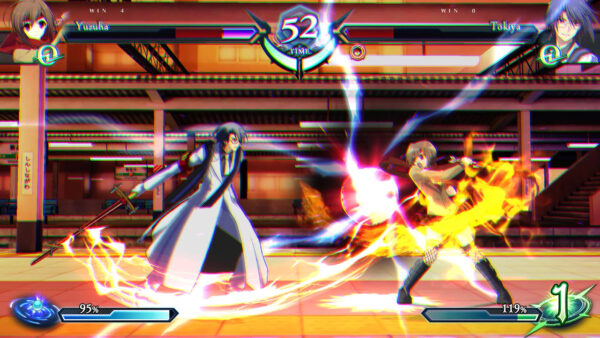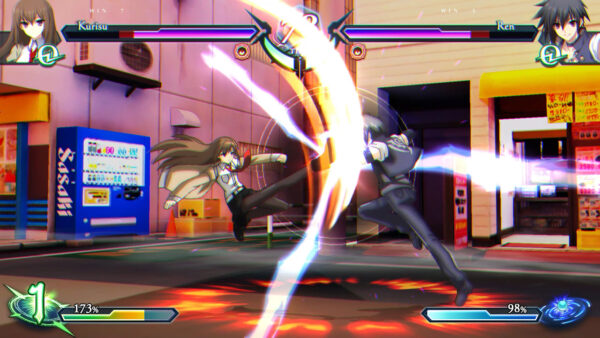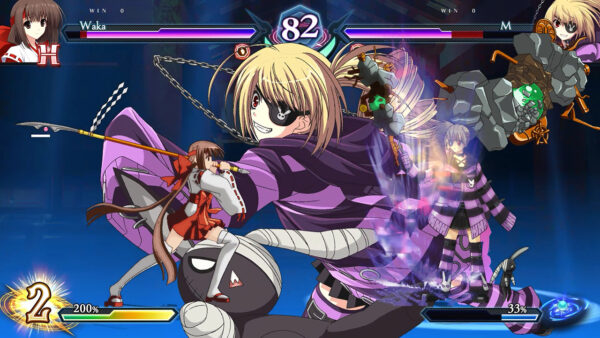
Phantom Breaker was a game that was first released on the Xbox 360 back in 2011 and was followed up by an arcade update known as Phantom Breaker: Another Code, and then a new version on the PS3 and 360 in 2013 called Phantom Breaker: Extra. What all these versions of the game had in common though, was that they were only released in Japan. Now a new version of the game has been released entitled Phantom Breaker: Omnia and it has come worldwide, so has it been worth the wait?
Phantom Breaker: Omnia is yet another deluxe release of the game and this time we are given four new characters, two of which are guests from Stein;s Gate and Chaos Head, but there is more than that. The graphics have been given a facelift and there is a newly revamped soundtrack available, but the original version can be chosen as well.
In terms of gameplay, Phantom Breaker: Omnia has some rather interesting mechanics. This is a very fast-paced fighting game, but it is easy to learn as there are complicated inputs here. Instead, controls are down by moving in a direction and using one of the button inputs for light and heavy attacks, making this a game that you can get into quickly.

There are three styles to choose from when selecting a character: Quick, Omnia and Hard. Quick is a fast-paced style that focuses on combos, while Hard is a slower-paced style that is heavy on damage and defence. Omnia is a balance between the two and the three styles end up giving the game a lot of replay value, by giving many different ways to play individual characters, especially as each style has its own burst moves.
Other mechanics typical of fighting games are here, such as tapping twice to dash forward or backward, but there are modern touches as well. The game makes use of auto combos, which may be off-putting to some, but they do not get in the way of the intense action. If anything, they make the game feel more welcoming for both newcomers and veterans alike. The other areas of note in the gameplay are the special meters and gauges that will affect the moves you can do and the way the fights progress.
As mentioned, each style has its own burst moves that all depend on the burst meter. There are other gauges to keep in mind as well, such as the tension gauge, which is shared between characters and rises as fights happen, increasing attack power as it goes on. You can also recover some health in the vital chamber in the health bar, and doing this feeds into the character’s overdrive abilities.

Online play has the usual ranked and casual modes, and the connection seems to work fine. What may be an issue to some though, is that this is not using rollback netcode and that does feel like a missed opportunity. Still, the connection worked well even on Switch, so there was not much to complain about.
The game has a story mode that functions as a visual novel, but even aside from that mode, there is a lot of good writing in the character interactions and a good amount of humour. There is also a training mode, a score attack mode, a timeless mode, a time attack mode and of course an arcade mode. There is also an incentive to play the single-player content, as doing so unlocks art and other extras in the gallery.
Phantom breaker: Omnia looks and sounds great as mentioned, and both English and Japanese voices can be selected. The game runs at a solid 60 FPS even on the Switch and is a joy to watch in motion. There is even an achievement system that is integrated well into the game and helps add to the experience.

For a long time, the only experience the west had with Phantom Breaker was the spinoff Phantom Breaker: Battlegrounds, which is a beat ‘em up, but the wait for the actual fighting game has been worth it. This is a fun fighting game and a worthy spiritual sequel to Asuka 120%, which has many fans as well. Whether you are a new player or a returning veteran this is worth checking out for sure.
Disclaimer: A review key was provided.

